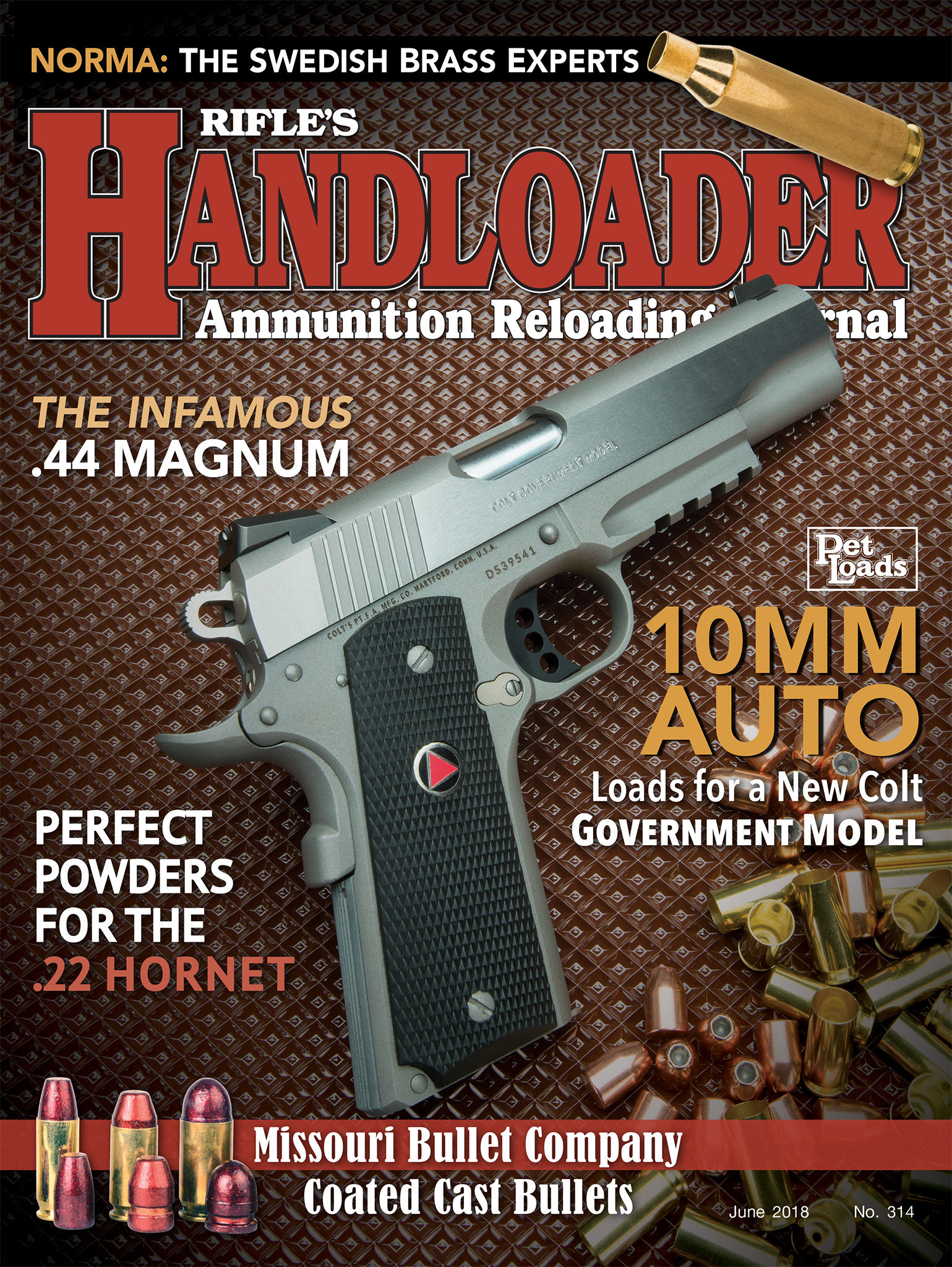10MM Auto (Pet Loads)
Load Testing with a Colt Delta Elite Stainless
feature By: Brian Pearce | June, 18
The 10mm Auto is generally considered the brainchild of Jeff Cooper, which may be true. In his 1974 book Cooper on Handguns he gives credit to Whit Collins for actually designing the cartridge. Regardless, Cooper was in a position to promote it in the press during the 1970s.
Its origin started during the 1960s by cutting off .30 Remington cases to around .990 inch and loading them with .38-40 Winchester and .401 Herter’s Power Magnum .40-caliber bullets. Cooper tried multiple powders
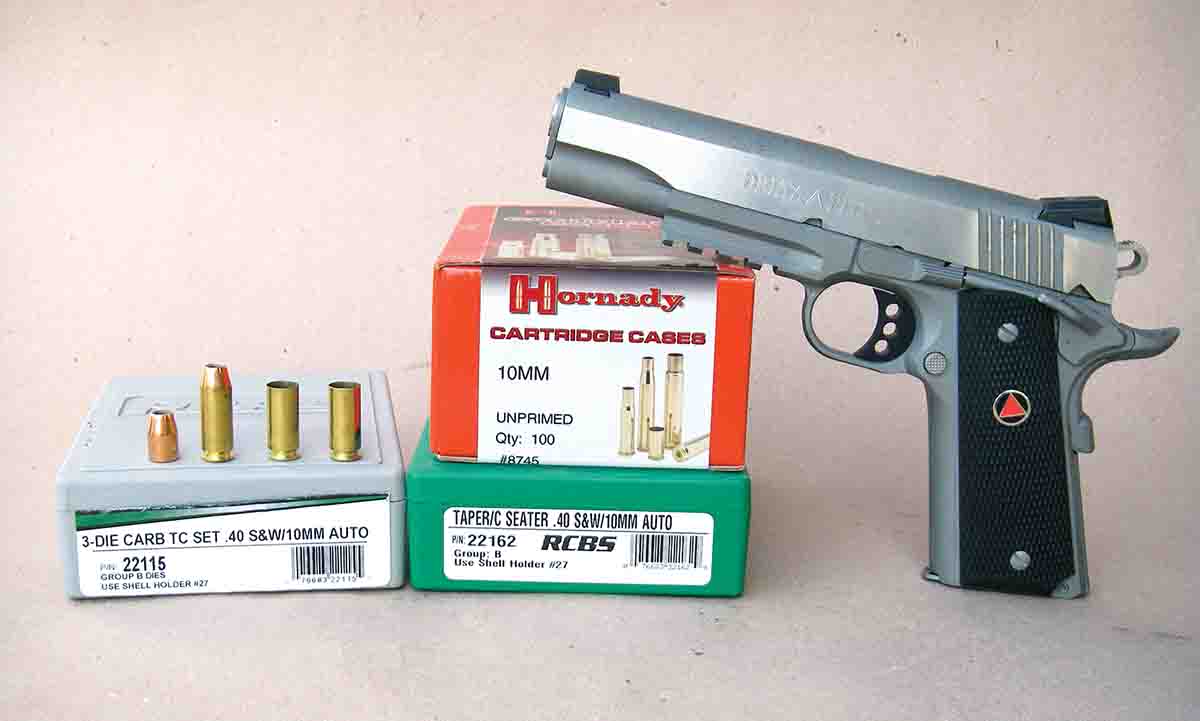

The cartridge received widespread publicity when Smith & Wesson and Colt began producing autoloading pistols, and the FBI officially adopted the cartridge in 1989, which resulted in soaring commercial demand. It was the 10mm’s outstanding performance, however, that caused its rise and fall. In short, the FBI found full-power loads a bit stout for some agents and soon requested a load that would launch a 180-grain bullet at 980 fps; some sources list velocity at 1,030 fps. While there was no official name for these “reduced” loads, they are often referred to as “FBI lite,” “FBI load” or simply “subsonic.”
It didn’t take Smith & Wesson long to figure out that the 10mm FBI load could be contained in a shorter case, allowing it to be housed in most 9mm pistol designs that were notably lighter and more compact. By cutting the case to .850 inch and changing the primer from large pistol to small pistol, the .40 S&W was introduced in 1990, and it easily met the above ballistic requirements and gave a notable performance edge over the 9mm Luger. Its popularity was immediate; it was adopted by many law enforcement agencies, shooters and was commonly used for home protection and concealed-carry applications. The popularity of the .40 S&W almost killed the 10mm, but it has proven too useful.
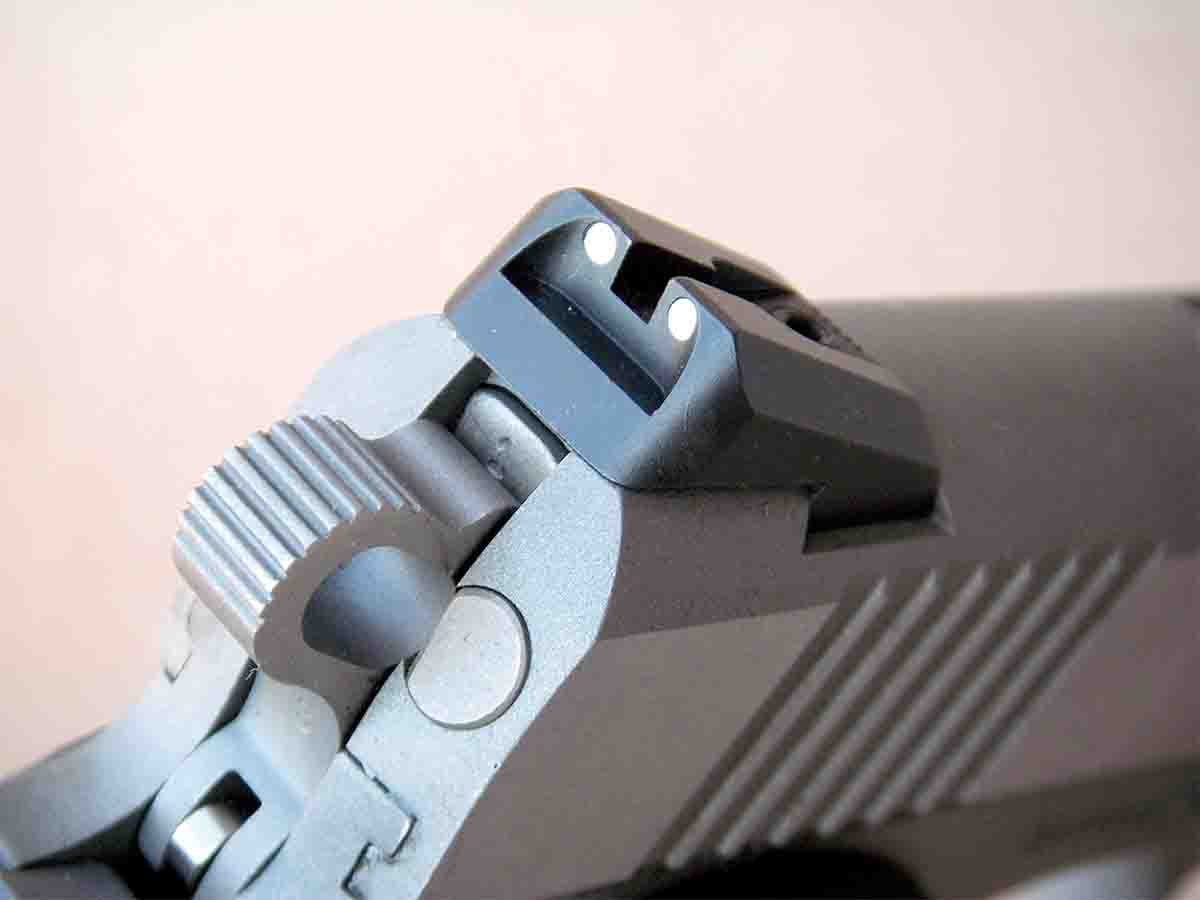
In studying current factory loads, their performances (and pressures) are all over the map. For example, Federal still offers the FBI load with a 180-grain Hydra-Shok JHP at 1,030 fps and an American Eagle 180-grain FMJ at the same velocity. Federal’s sister company, Blazer, offers a nonreloadable aluminum case load containing a 180-grain TMJ bullet at 1,050 fps. Remington lists a 180 Metal Case bullet at 1,150 fps, and Winchester offers the 175 Silvertip HP at 1,290 fps. Hornady lists a 155 XTP at 1,265 fps, a 175 FlexLock at 1,160 fps and a 180 XTP at 1,180 fps. Buffalo Bore loads a 200 FMJ-FN at 1,200 fps that effectively duplicates early Norma factory loads, but the company also offers a 180 JHP at 1,350 fps.
These variances in factory-load performance should be discussed before handloaders select load data and assemble ammunition. Maximum average pressure guidelines established
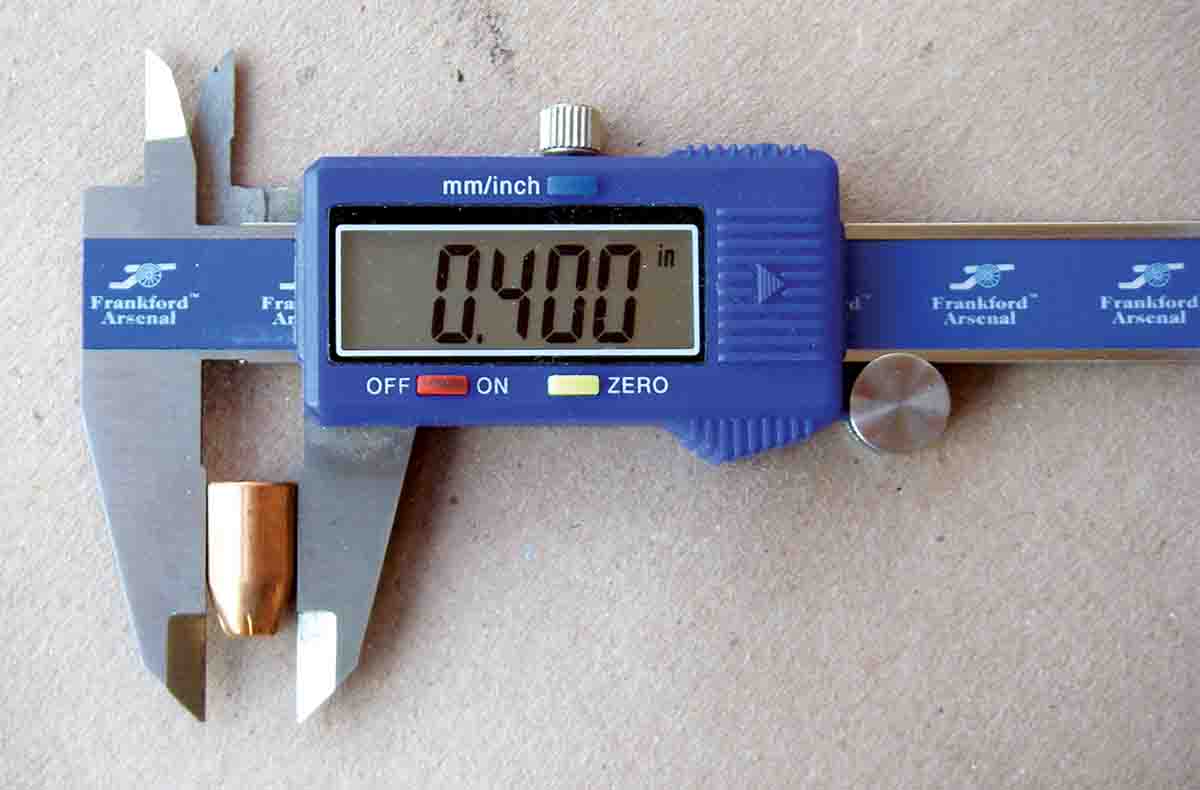
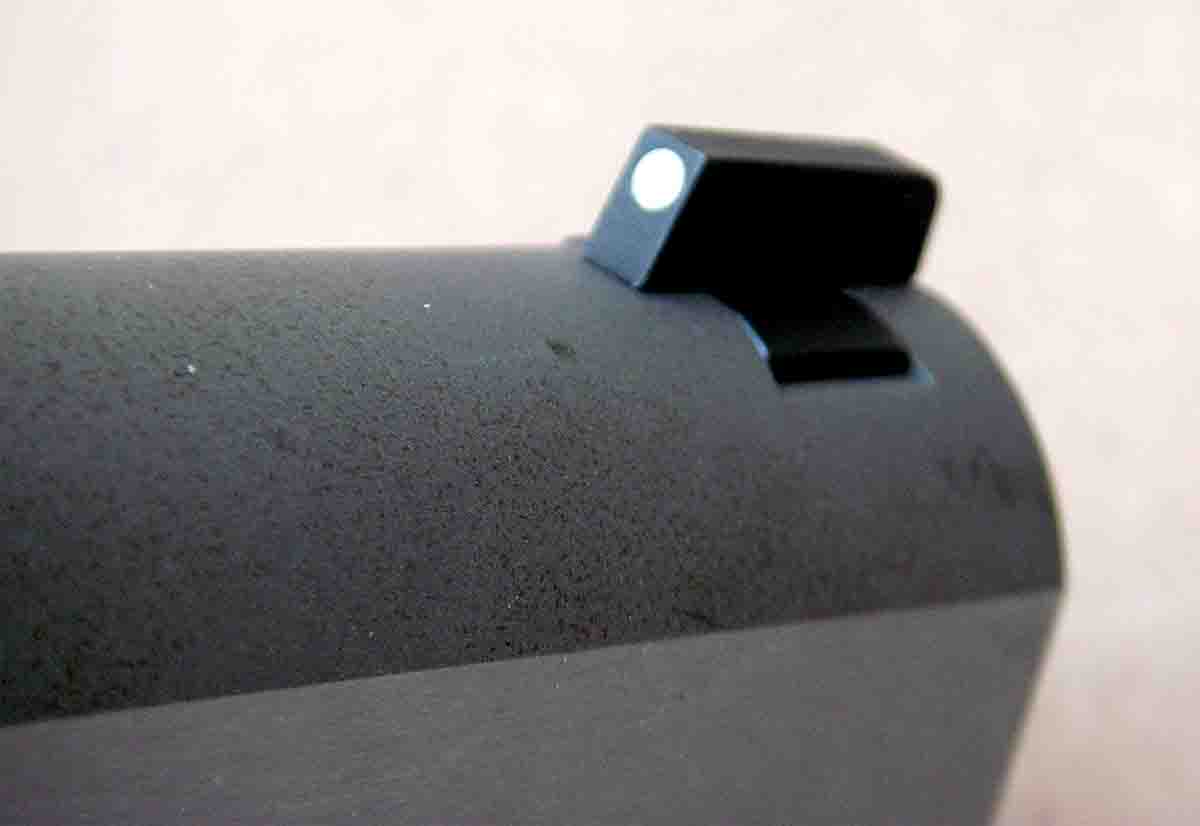
On the other hand, pistols that feature correctly engineered feed ramps that result in a “supported” chamber, along with correct recoil spring(s), lockup etc., will handle full-power 10mm loads with ease, as do all revolvers. Most gun companies have made engineering corrections to improve current models; however, guns with unsupported chambers are still in circulation, and in some cases are still being manufactured. This explains why most ammunition companies are taking a rather conservative approach in regard to the pressure of their
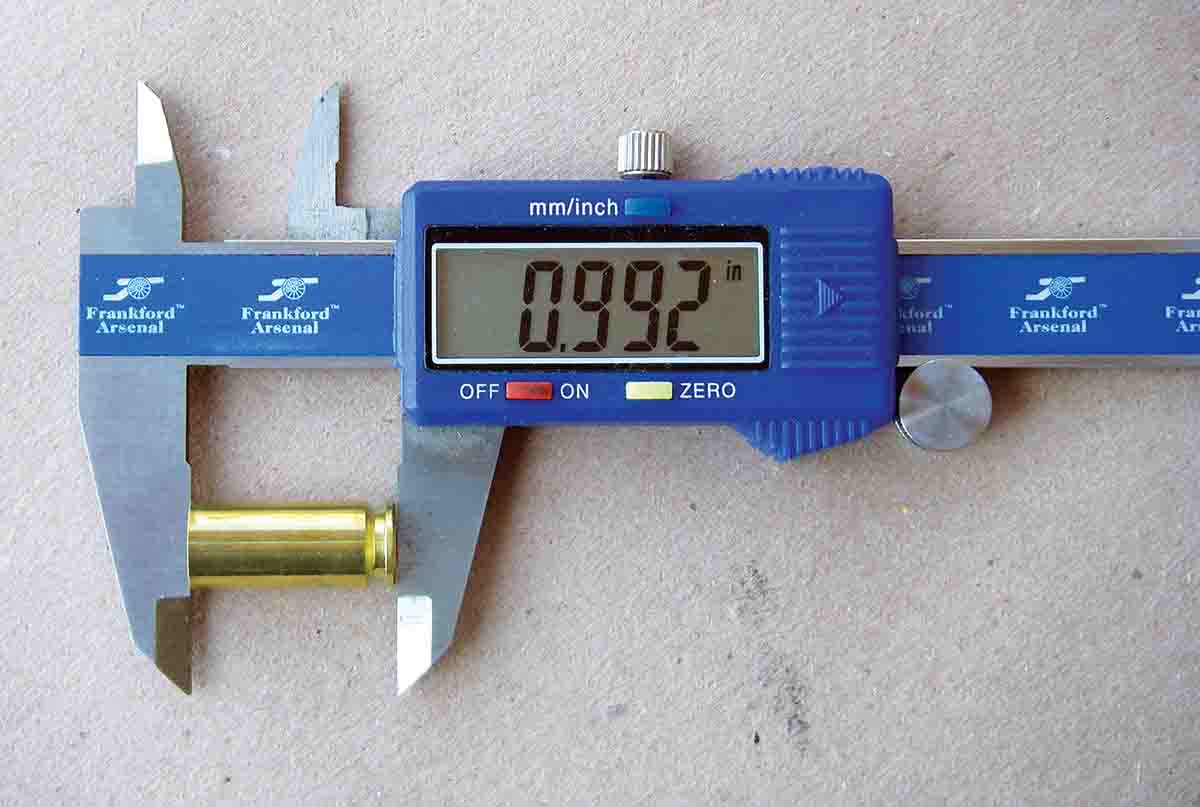
With these thoughts in mind, I am also choosing to limit the accompanying pressures to 30,000 psi or less, which can be used in any pistol so chambered. Loaded to this pressure level, 150- and 155-grain bullets can usually reach 1,300 to 1,350 fps, 180-grain bullets to around 1,200 fps and 200-grain bullets at 1,100 fps, which is still respectable performance.
For developing the accompanying handload data, a Colt Delta Elite Stainless (Government Model) was selected. The pistol displays good machine work, is tight and proved accurate. It features a beavertail grip safety with memory pad, a flat mainspring housing, lowered and angled ejection port, snag-free white dot sights each mounted to the slide via dovetails, extended trigger and an optional rail. The trigger broke at a respectable 5 pounds.
Both Starline and Hornady cases were used to develop the accompanying data. They are both strong, of high quality and readily available. Hornady cases were used to develop loads containing bullets from 135 through 165 grains, while Starline brass was used for all loads containing 180- through 200-grain bullet weights. In spite of being fired and reloaded multiple times, no cases split, cracked or showed signs of fatigue.
The industry lists a maximum case length of .992 inch and a minimum suggested trim-to length of .982 inch. Often, but not always, top accuracy will be achieved from cases that are at maximum length. In measuring cases from Federal, Hornady, Remington, Winchester and Starline, none measured a full .992 inch when new. They all measured .982 to not over .988 inch.
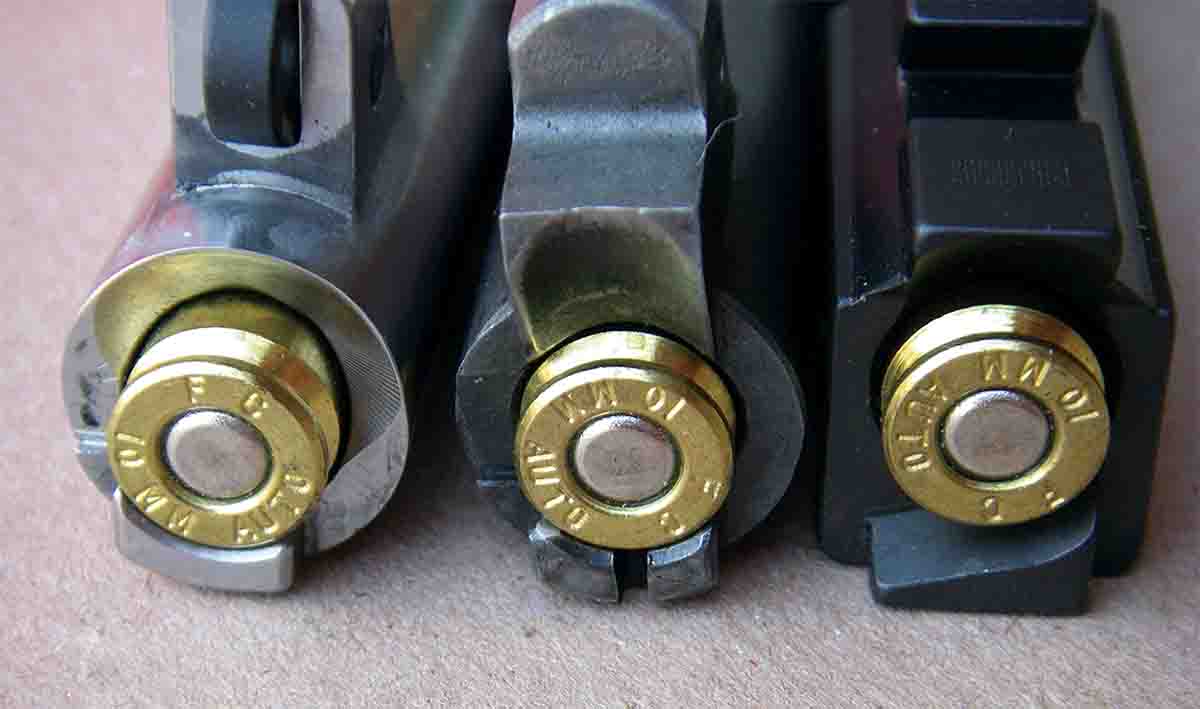
Using blade calipers to measure an exact crimp dimension might give some handloaders difficulty. Another option is to place a factory-loaded cartridge into the shellholder and raise the ram on the press all the way up. Then screw down the taper crimp die (without a seating plug installed) with finger pressure only until it is in firm contact with the factory round. Lower the ram and remove the factory cartridge, then turn the crimp die
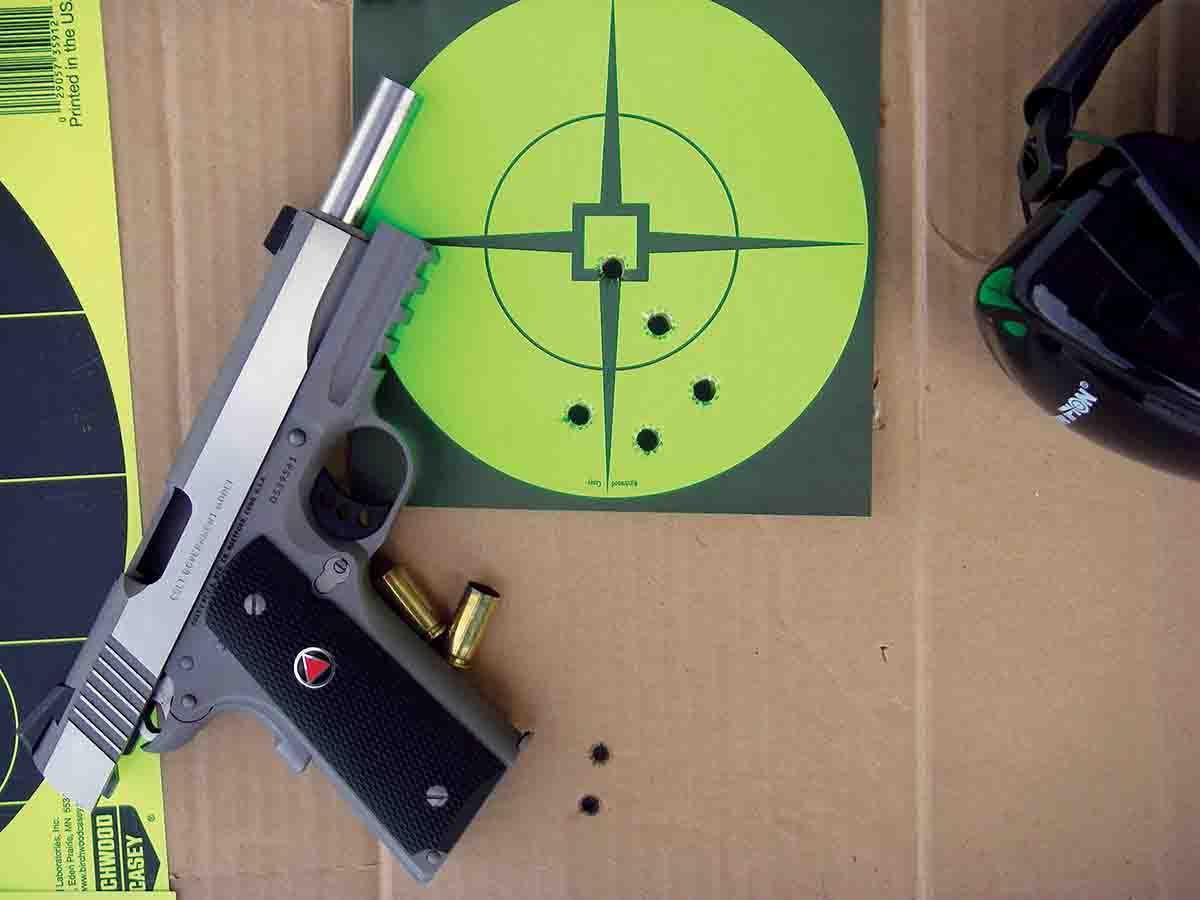
Some handloaders claim that the 10mm Auto does not headspace on the case mouth, but rather is held in place by the pistol’s extractor. It is true that a case that is shorter than industry-specified minimum lengths can be held firmly enough by the extractor to fire.
An extreme example is that most 1911 10mms with an internal extractor can be loaded with a magazine full of .40 S&W cartridges and fired. The cartridges will generally feed, fire and function, but there will be an occasional misfire due to the lack of positive headspace control. Furthermore, accuracy will be extremely poor, and for reasons that will not be discussed at this time, this practice can potentially prove dangerous and is not recommended.
In addition to all of the evidence of dimensional cartridge drawings and chamber specifications, doubters should consider that a 10mm cartridge can be inserted into a revolver chamber backward as the rim, measuring .425 inch, is the same as the case head and cannot possibly facilitate headspace control. However, when cartridges are chambered correctly, the case mouth firmly contacts the end of the chamber to achieve correct headspace (with the only exception of revolvers loaded with moon clips). Again, when inserted into a chamber correctly, the case mouth plays an important role in positive headspace.
CCI 300 Large Pistol primers were used to develop the accompanying data; however, Federal 150 primers can also be used interchangeably. Primers should be seated .003 to .005 inch below flush to help assure reliable ignition and proper feeding.
There are many outstanding powders suitable for assembling first-rate 10mm handloads. For light target loads, Hodgdon Titegroup, Winchester 231, Alliant Bullseye and Accurate No. 2 are good examples that
-TABLE 4.jpg)
Thanks to the extreme popularity of the .40 S&W, there is a large selection of excellent 10mm/.400-inch bullets available from all major U.S. bullet manufacturers. Lightweight cup-and-core examples include Nosler and Sierra 135-grain JHP bullets while Hornady, Nosler, Sierra and Speer offer various 150- and 155-grain hollowpoint bullets that provide rapid expansion. Although these bullets are designed primarily for the .40 S&W, they worked very well in the 10mm.
It is the various 180-grain bullets that really shine in the 10mm, as they offer distinct performance advantages and were generally the most accurate. Although it is a true match bullet, the Sierra 190-grain FPJ is a good choice where deep penetration is desired on game such as bear or hogs. While I have not tested the Hornady 200-grain HAP bullet for penetration, company representatives tell me that it will not expand, which might make it a good choice for the above application.
A number of subsonic starting loads were developed (mostly with 180-grain bullets), which will more or less duplicate the FBI load and can be suppressed if desired.
All loads were assembled with an overall cartridge length between 1.250 and 1.260 inch, with the latter being the industry maximum length, and all loads chambered properly in the Colt Delta Elite. However, some early 10mm pistols may require slightly deeper seating for the bullet’s ogive to clear the chamber’s leade. Seating bullets deeper, even in small increments, will change the pressure of a given load.
-TABLE 1.jpg)
-TABLE 2.jpg)
-TABLE 3.jpg)


